Posts on Happily Homegrown contain affiliate links. When you make a purchase through an affiliate link, your price will be the same, but Happily Homegrown will receive a small commission. Thank you for your support!
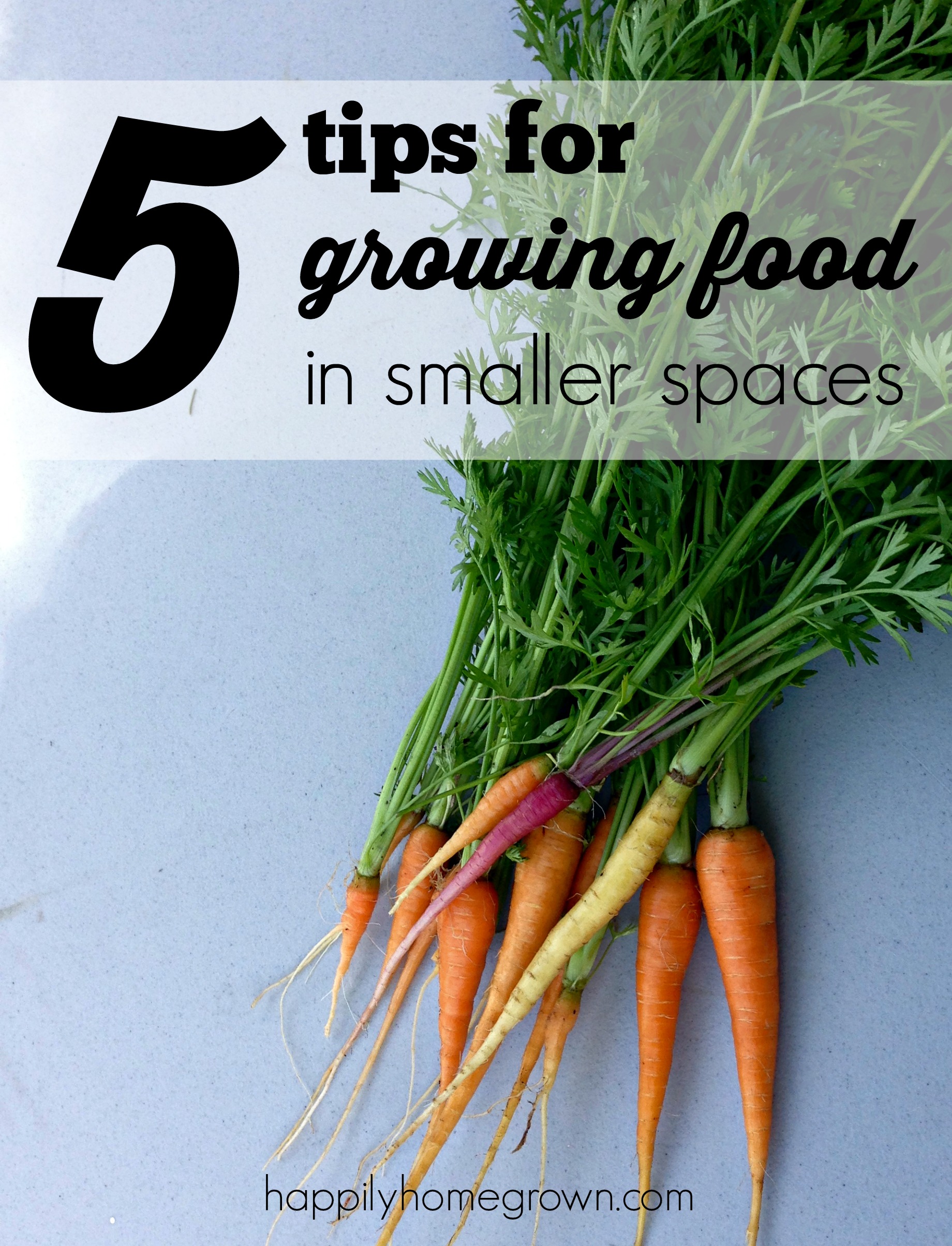 Many people think that you have to have acres and acres of land to be able to grow food and provide for your family. The reality is, no matter how much space you have, you can grow some of your own food; you just have more options when you have more space. With a little creativity, even a studio apartment in the city, you can be growing food in small spaces.
Many people think that you have to have acres and acres of land to be able to grow food and provide for your family. The reality is, no matter how much space you have, you can grow some of your own food; you just have more options when you have more space. With a little creativity, even a studio apartment in the city, you can be growing food in small spaces.
5 Tips for Growing Food in Smaller Spaces
- Grow herbs on a sunny window ledge. Herbs thrive indoors. Fill a few small pots with basil, thyme, parsley, and oregano and you will always have fresh herbs on hand to add to recipes. The added benefit to growing herbs indoors – you can grow them all 12 months out of the year with great success!
- Use flower pots and planters when you don’t have the space for a large garden. Many vegetables can grow and be quite productive even when grown in a container. While vegetables like tomatoes, peppers, squash & eggplants can grow 1 plant per 14” diameter pot, other vegetables like onions, carrots, and lettuce can fit multiple plants in the same amount of space. Place these containers in any outdoor sunny spot & you are good to go.
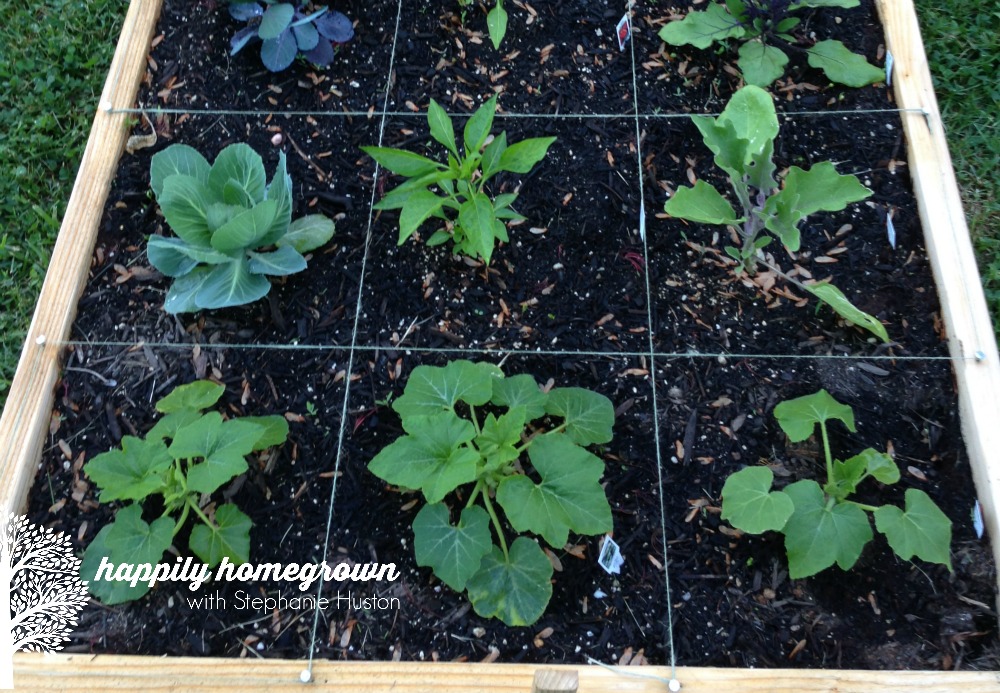
Squash, peppers, eggplant, and cabbage planted using the Square Foot Gardening Method. - Square Foot Gardening (SFG) provides a lot of variety in a small space. In SFG, each square is a different crop, so in a 4’x4′ garden bed, you can grow 16 different vegetables, even more if you practice succession planting, and plant a new crop each time you harvest the previous one.
- Select dwarf fruit trees for your backyard orchard. A standard fruit tree can grow to over 25 feet tall, where a dwarf fruit tree has been grafted onto a root stock that will prevent it from growing over 10 feet. An added benefit is that dwarf fruit trees start producing fruit sooner than standard trees, and they require less growing space. In the foot print of 1 standard fruit tree, you can grow 4 dwarf fruit trees! That means more fresh fruits/nuts through out the growing season and more diversity in your diet.
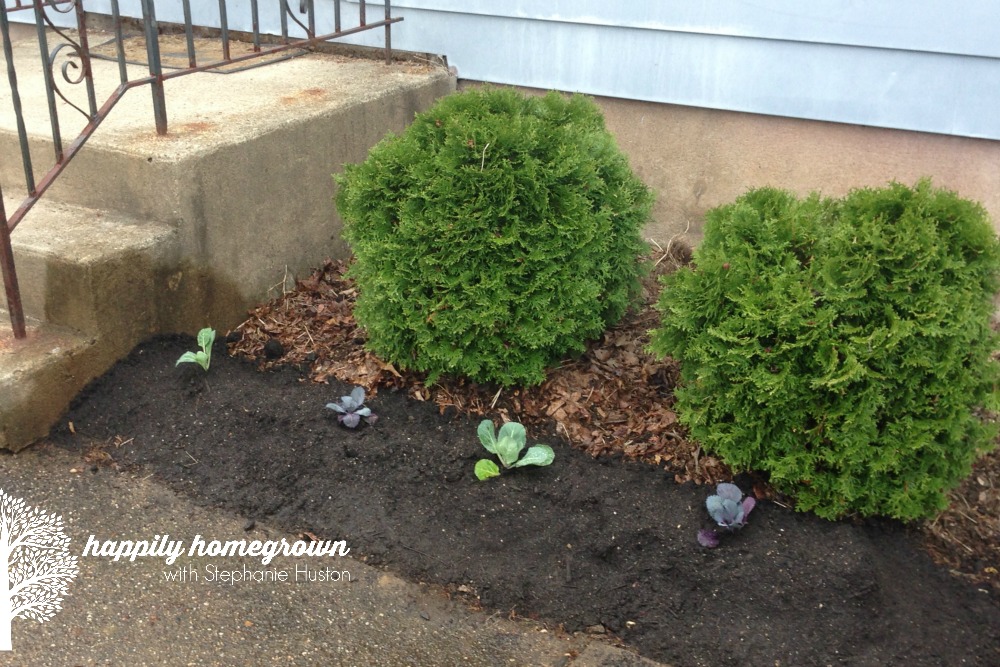
Red & Green cabbages planted in front of the arborvitae hedge. - Consider edible landscapes whenever possible. Compliment your flower gardens, walkways, and various spots in the yard by planting edibles among your other landscape plants. Blueberry bushes produce loads of delicious berries in early summer, and in fall the leaves turn a beautiful crimson that adds a festive pop of color to your yard. Instead of planting ornamental cabbages and kale, plant the real thing! They look very similar, but the edible varieties will put food on your table. Plant herbs among the flowers. They are great for enticing pollinators to your yard, they look good, and they taste amazing!
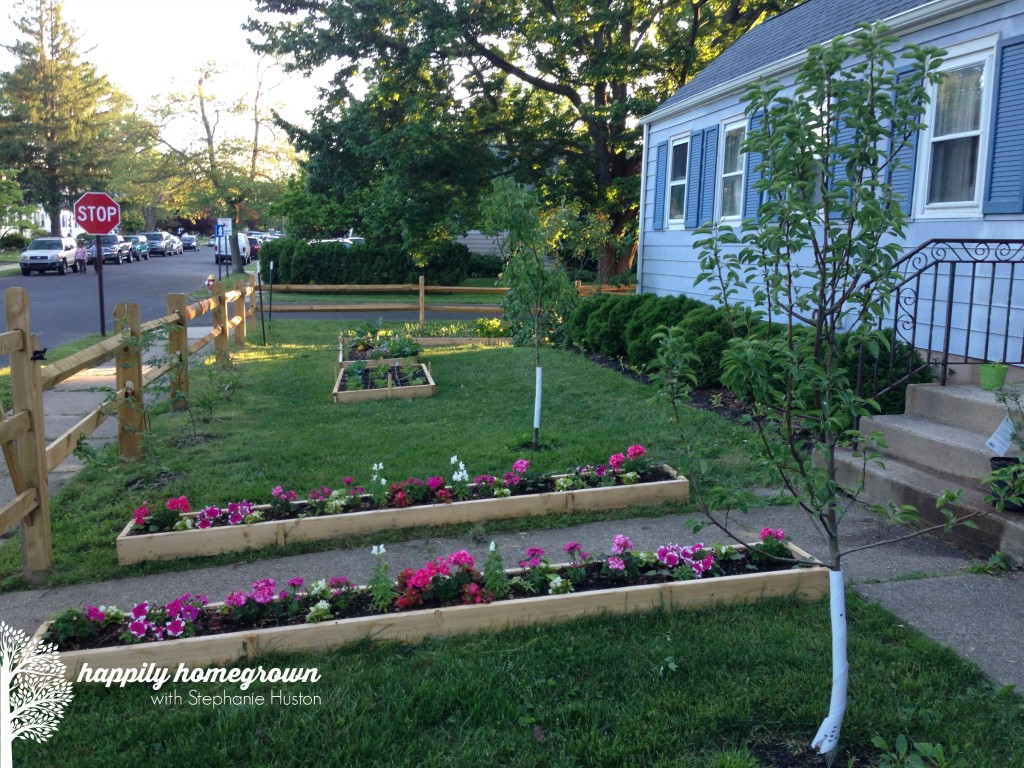
Whether growing herbs indoors, placing a planter of vegetables in a sunny spot of the yard, or going for a full on vegetable garden using a combination of Square Foot Gardening and edible landscapes, I hope you are inspired to start growing some of your own food.





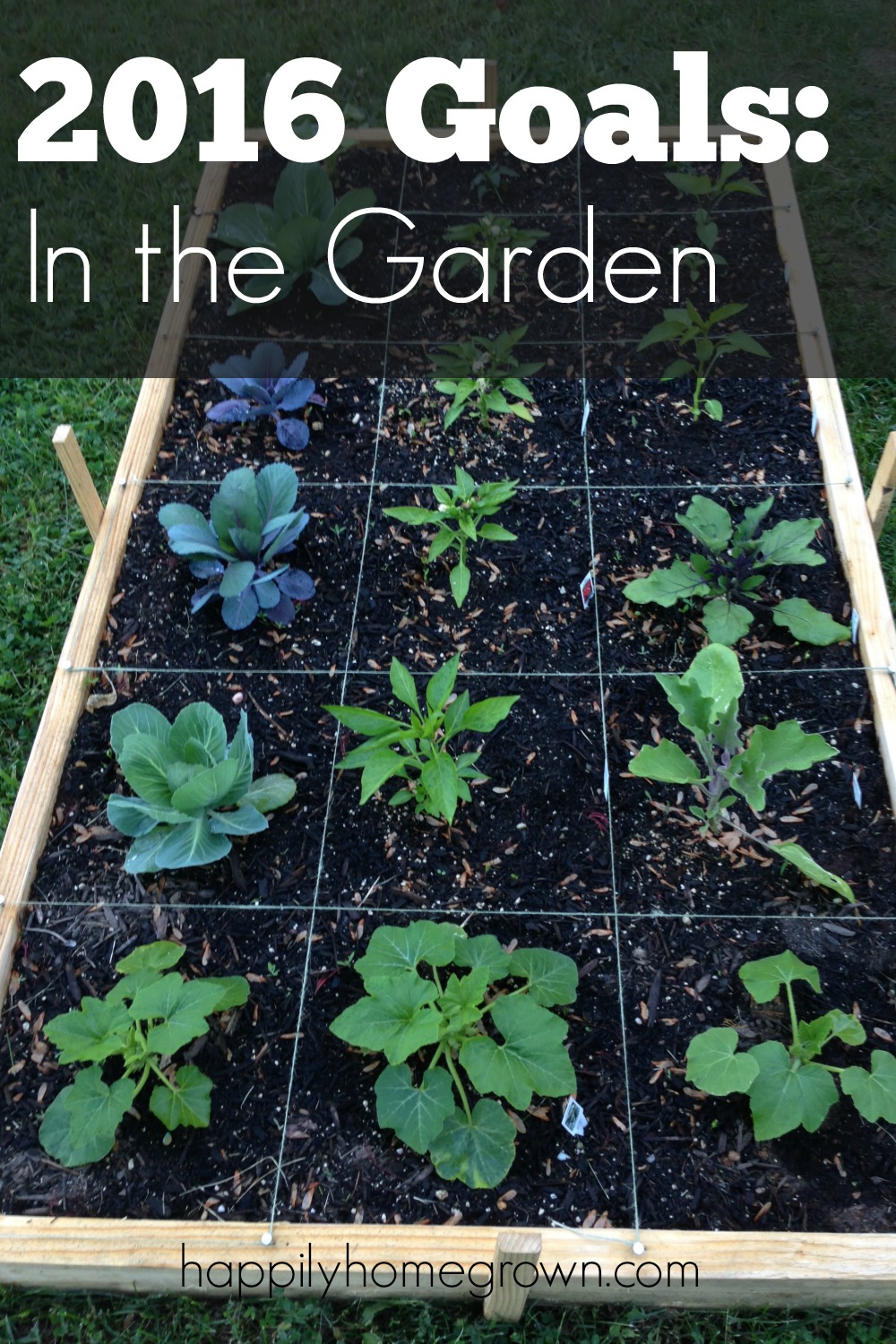
 Canning Safety | I Trust Science Over Grandma!
Canning Safety | I Trust Science Over Grandma!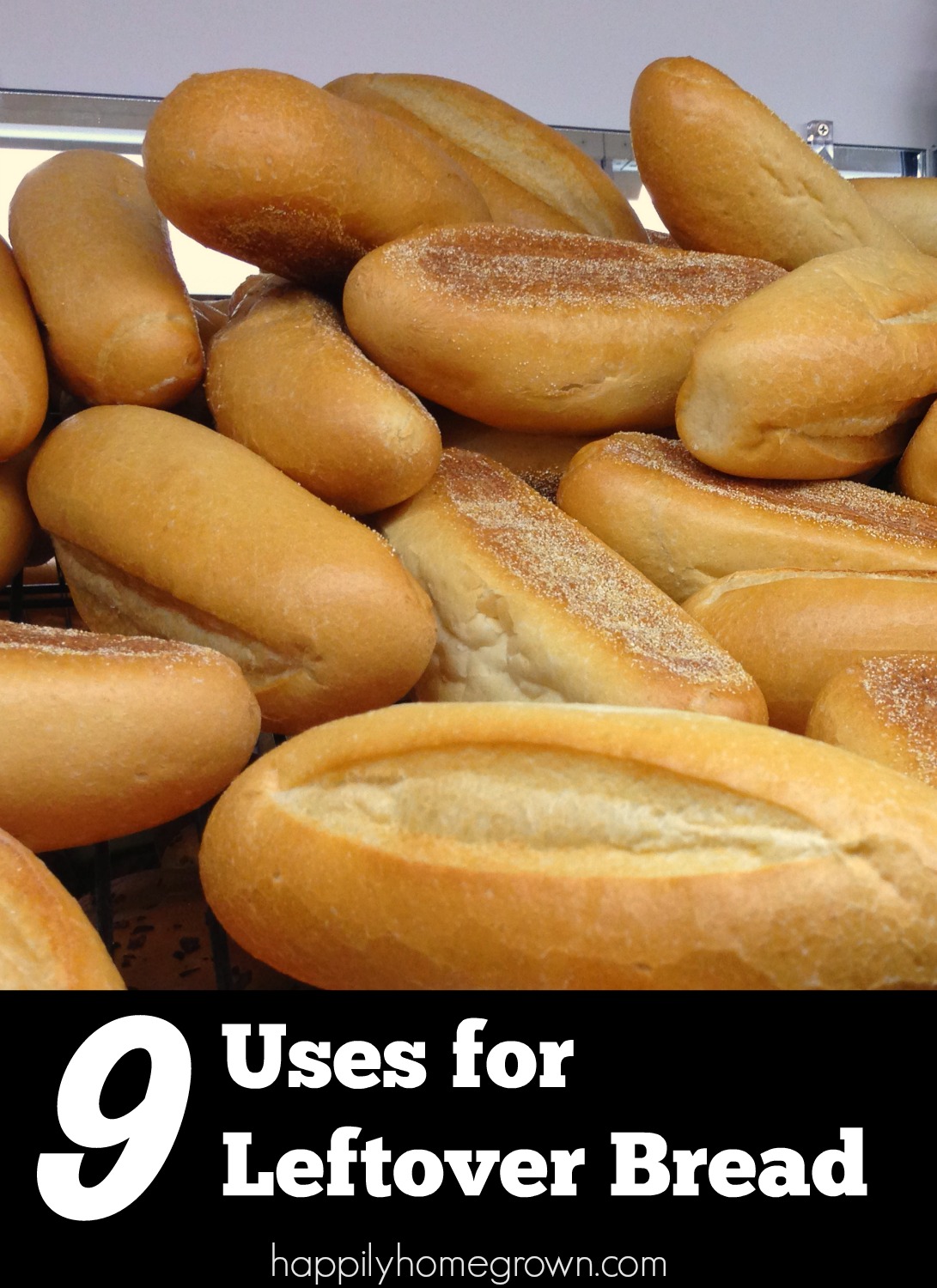
Love the images of your homestead!
Thank you Georgia! I long to see green outside again, so it was fun looking at my photos from last year.
This is great. My two faves are herbs in pots and edible landscapes!!! Now if only I could keep them alive….
Thanks!
Liz
I know what you mean! I’ve found that hardiest herbs are thyme, oregano, sage, and rosemary. I can’t kill them, and they come back year after year in the small planter on my back porch. If you’re brave, things in the mint family are pretty hardy too, but they spread out a lot and can take over an area. I’d recommend keeping them in pots as well otherwise mowing the lawn will smell quite minty!